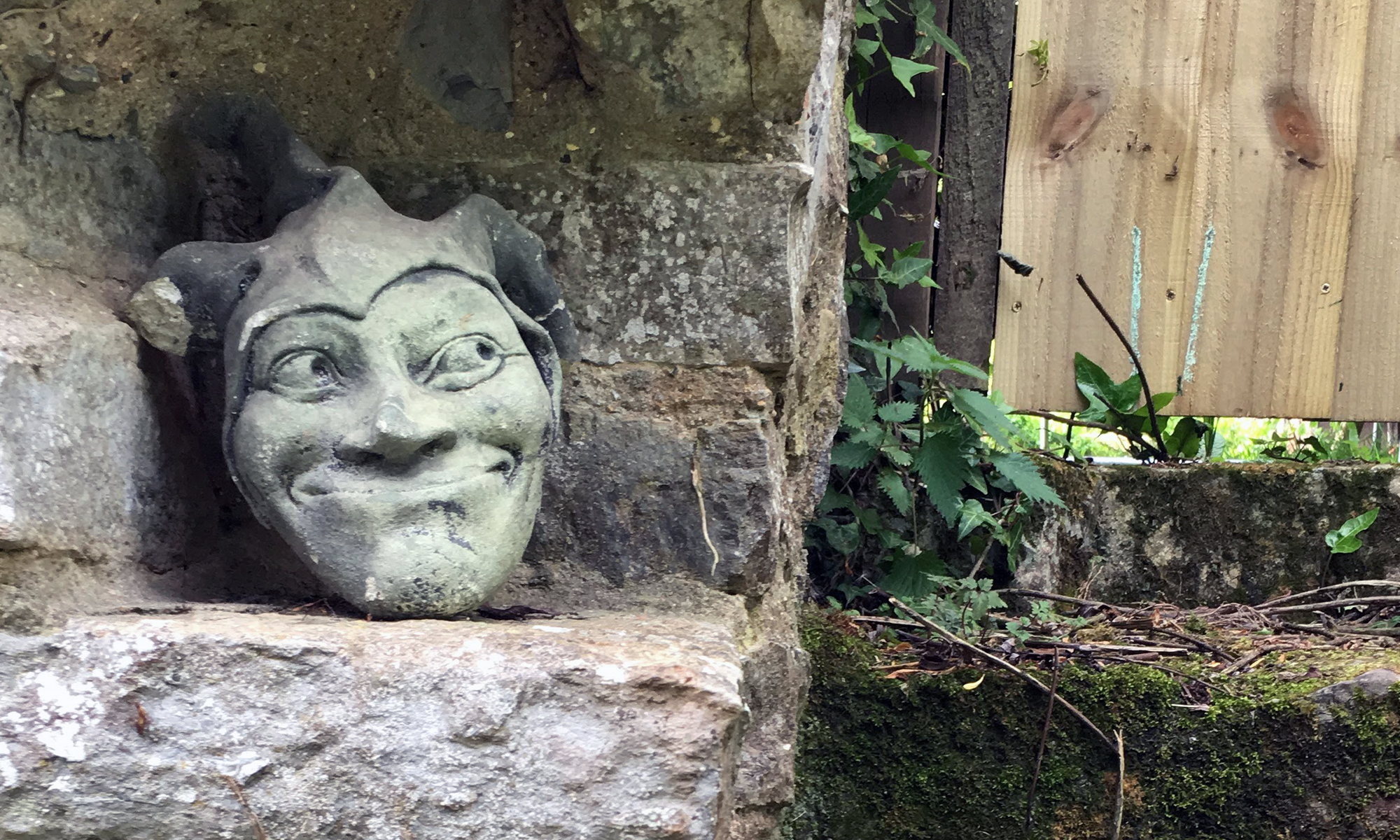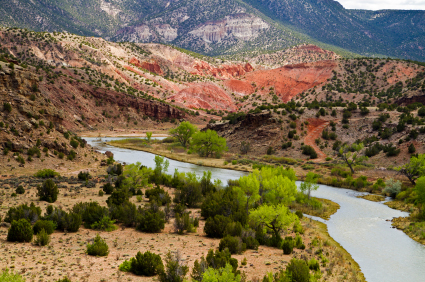I’m in New Mexico, taking a workshop from the ceramic artist Debra Fritts (who lives in Abiquiu, 50 miles north of Santa Fe). The class is being held outdoors, on a low sandy mesa in the high desert. The day is warm but not hot. The sky is clear and blue: it could be August monsoon season, my favorite.
I’m sitting on the ground on a large Indian blanket, cross-legged. There is a water-filled ditch below the shallow mesa, a little to the right of where I sit. I get up and walk down to the water to retrieve my clothes, which have been soaking in the crystal-clear water.
Floating in the water is my old white blouse, a loose-fitting, square-cut shirt with three-quarter length sleeves that I used to wear at least ten years ago (until it yellowed and I threw it away). There’s a dark-colored jacket, maybe a jean jacket or maybe a black jacket, I’m not sure; also a pair of cheap brown work gloves and fancy white lace fingerless gloves. Tops and gloves are all made of cotton.
I pull everything out and see that the water has purified the cotton fibers: whites are brilliant and dark colors have deepened.
I head back up to the blanket to prepare for the workshop but another woman has taken my place. She is quite haughty; she hasn’t noticed (or doesn’t care) that I had already been seated on “her” corner of the blanket.
I find her irritating and petty. Instead of picking a fight, I pick up my clothes, journal, pencils and other art supplies and move onto another blanket to right of her, a few feet lower on the mesa. I sit alone on the upper left corner of the second blanket, writing in my journal.
I have great respect for Debra and am excited to start the workshop. I’m looking forward to sleeping in the desert, beneath the stars.


What a great dream. I would like to be there. I love the clothes symbol. And then it seems like there is a challenge with the irritating woman and I loved the way you just got your things, moved on and thought about the workshop.